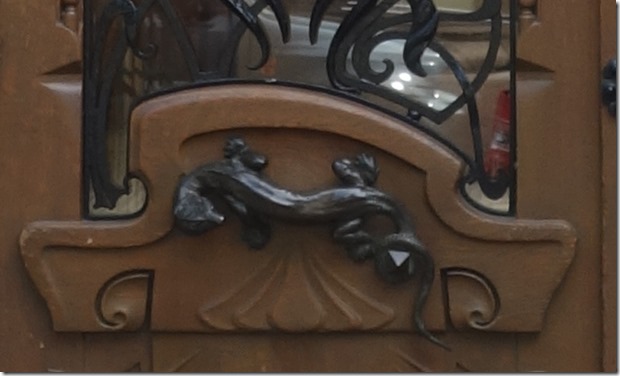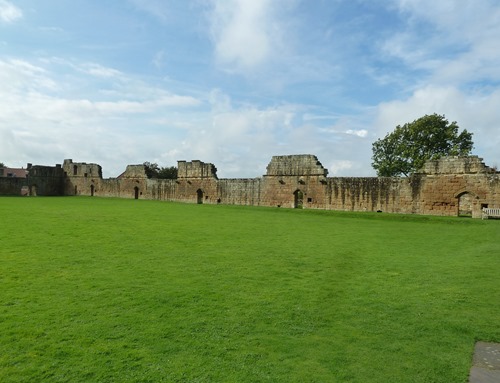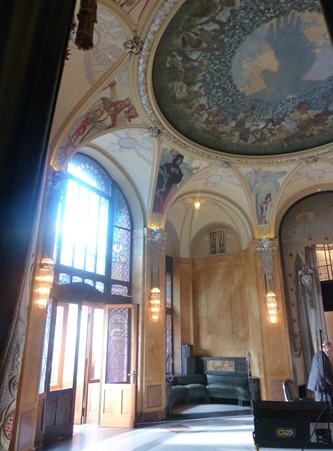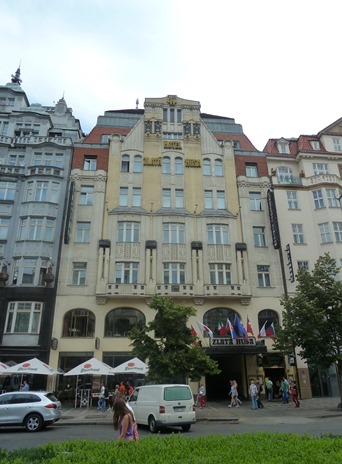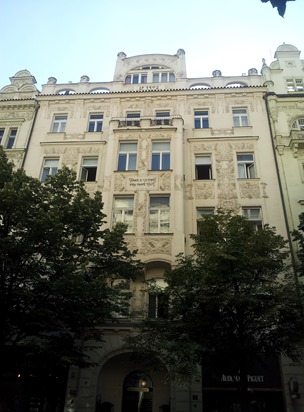
On Saturday we travelled over to Liverpool to visit the exhibition about Charles Rennie Mackintosh and the “Glasgow style” that had recently opened at the Walker Gallery. I’m a fan of the work of this rather brilliant architect / artist / interior designer and have visited a number of buildings that he designed over the years, so was keen to see the exhibition, even though, unusually for the Walker, there was a charge for entry. Despite this we had to queue for a short while before we were allowed in as the galleries were at capacity, so the entry fee certainly hasn’t put everybody off.
There was a lot to see; architects’ drawings, paintings, furniture, other objects produced by Mackintosh and other members of the Glasgow School, plus contextual information (including a number of short videos), and we spent a good hour and a half looking round. Unfortunately photography wasn’t allowed but the catalogue was, I thought, reasonably priced at a tenner, so we were able to take home a good reminder of what we’d seen. A number of “highlights” can also be viewed on the exhibition website.

Although Mackintosh’s work featured heavily, and was no doubt the main draw for visitors, there were some works by the other members of his close circle,
Margaret MacDonald (who he married), her sister Frances and his friend James Herbert McNair (who married Frances). Together, they became known as “the Four”. The group has a Liverpool connection as McNair was appointed as Instructor in Design at the city’s School of Architecture and Applied Art in 1898 and he moved there with Frances. The Walker had previously held an exhibition about the McNairs back in 2007, which I remeber visiting.
Exponents of the Glasgow Style were influenced by a number of artistic movements, particularly the Arts and Crafts movement, Art Nouveau, and Symbolism , and they in turn, particularly Mackintosh and Margaret MacDonald had an impact on the Continental artists.
Although a lot of attention is paid to Mackintosh, I think that his wife had a major influence on him and it could be argued that they were collaborators. And one of the highlights of the exhibition for me was Margaret’s large gesso work , The May Queen

Other highlights included
- Architectural drawings by Mackintosh for some of his iconic buildings including the Glasgow School of Art (sadly severely damaged by the fire last year) and his proposal for Liverpool Anglican Cathedral, which I think would have been a magnificent building if his design had been selected,
- ‘Man Makes the Beads of Life but Woman Must Thread Them‘, a watercolour by Frances MacDonald McNair from 1911, painted when she was going through a very difficult time in her relationship with McNair
- Furniture, fittings and stencils designed for Mrs Cranston’s tearooms in Glasgow
- Drawings and a video about buildings designed by two other architects, James Salmon Jnr and John Gaff Gillespie
- Book cover designs, bookplates and sketches by Talwin Morris
So, all in all, a very good exhibition, well worth seeing. It’s a pity about the entry fee, as I’m sure that will put off some people who’d like to see it (especially families).











